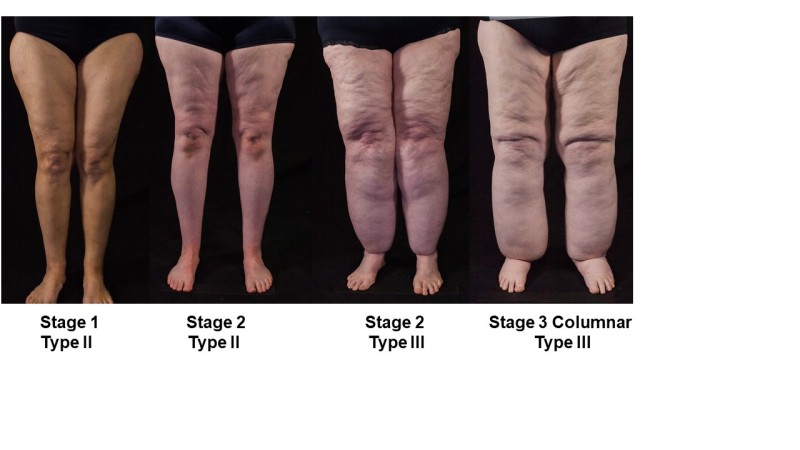4 Things You Must Know Before Accepting a Lipedema Treatment
Have you noticed discomfort, skin texture changes, or swelling in your legs, hips, or buttocks? Lipedema in its early stages is commonly mistaken for general weight gain. When talking to your doctor about lipedema and treatment options, here are some things to consider.
What is Lipedema?
Lipedema is a chronic condition that primarily affects women and is characterized by inflamed fat cells. This condition can cause pain, abnormal sensations and discomfort, and a swelling-like appearance in the legs, hips, and occasionally the arms. Unlike general weight gain, lipedema causes a disproportionate fat accumulation in the lower body, sparing the feet.
It's often accompanied by tenderness, making activities like leg massages or wearing compression stockings quite uncomfortable.
Hormonal changes, like those during menstrual cycles, may intensify these symptoms. Lipedema often runs in families, suggesting a genetic or inherited component to developing symptoms.
It is important to note that lipedema differs from obesity and is not caused by excess calorie intake. The condition typically progresses through several stages, each with its characteristics:

Lipedema Stage 1:
Appearance: The skin in the affected area appears normal, but there is an underlying layer of soft, palpable fat.
Symptoms: Patients might experience heaviness or discomfort in the affected limbs with a sudden fat build-up in the lower body, including the buttocks, hips, thighs, and calves. Some patients report heavy, aching legs and inflammatory pain in the lower body during this stage.
Lipedema Stage 2:
Appearance: The skin starts to become uneven, resembling a mattress or the surface of an orange (a condition known as the "mattress phenomenon" or "orange peel skin"). The fat underneath becomes more fibrotic and nodular, forming lipomas, a fatty lump that settles between the muscles and skin.
Symptoms: Increased discomfort, weight gain, and sensitivity in the affected areas.
Lipedema Stage 3:
Appearance: Large fat lobules form around the thighs, knees, and sometimes on the lower legs. The skin texture becomes more uneven, and fat accumulates in the hips, buttocks, thighs, and calves.
Symptoms: Patients may report their mobility being affected due to the size and weight of the fat lobules. There may also be increased pain and a higher risk of bruising.
Lipedema Stage 4:
Appearance: This stage is often characterized by lymphedema, with significant swelling due to lymphatic dysfunction.
Symptoms: Stage four is linked to increased pain, mobility issues, and frequent infections.
Early diagnosis and management of lipedema are crucial to prevent progression and improve quality of life. Treatments can include lifestyle changes, physical therapy, compression garments, and, in some cases, surgery. It is important to remember that lipedema isn’t caused by overeating or being overweight; people with healthy lifestyles can develop lipedema, especially if they have a family history.
When considering lipedema treatments, here are some things you should consider:
1. How is Lipedema Diagnosed?
Diagnosing lipedema typically involves a combination of clinical evaluation and medical history assessment. There are no current blood tests or diagnostic imaging that can diagnose lipedema.
Lipedema is diagnosed primarily based on clinical evaluation and patient history rather than specific diagnostic tests. The process typically includes:
Medical History: The doctor will ask about symptoms, family history of similar conditions, and the patient's overall health history.
Physical Examination: Lipedema has distinct characteristics that can be observed during a physical exam. It typically presents as symmetrical swelling in the legs, extending from the hips to the ankles, sparing the feet. The fat deposition is often tender and can be easily bruised.
Ruling Out Other Conditions: Conditions like lymphedema, obesity, and chronic venous insufficiency have symptoms that can overlap with lipedema. These need to be ruled out through clinical evaluation and, in some cases, additional tests like Doppler ultrasound for chronic venous insufficiency or lymphoscintigraphy for lymphedema.
Lack of Pitting Edema: Unlike some other conditions, lipedema does not usually cause pitting edema, where pressing on the swollen area leaves a pit or indent.
Pain and Tenderness: Lipedema fat is often painful and tender to the touch, which is not usually the case in common obesity.
Response to Diet and Exercise: In lipedema, the affected areas do not significantly reduce in size with general weight loss strategies.
Family History: There may be a family history of similar symptoms, as lipedema can have a genetic component.
Stages and Types: The doctor may classify the condition into stages and types based on the extent and nature of the fat deposition.
While there are no laboratory tests or imaging studies to diagnose lipedema, they may be used to exclude other conditions. It's essential for a diagnosis to be made by a healthcare provider experienced in recognizing lipedema, as it is often misdiagnosed or undiagnosed.
2. How is Lipedema Treated?
Once diagnosed, managing lipedema involves a multifaceted approach. Lipedema is treated through a combination of methods to manage symptoms and improve quality of life.
The treatment approaches for lipedema include but aren’t limited to:
Compression Therapy: Essential for managing Lipedema, compression garments help reduce fluid buildup and inflammation. You should experiment to find the most comfortable type, starting with lighter compression and increasing the compression intensity as time passes. Some patients report difficulty wearing or using compression garments, so talk to your doctor about your options.
Dietary Adjustments: Embracing an anti-inflammatory diet can significantly benefit Lipedema patients. Focus on whole foods, plant-based options, and hydration while incorporating natural anti-inflammatories into your meals. While weight loss doesn't cure lipedema, maintaining a healthy diet and regular exercise can help manage symptoms and improve mobility.
Exercise: Regular, gentle exercise is beneficial, helping to reduce inflammation and manage hormonal fluctuation symptoms.
Liposuction: In cases where lifestyle changes don't bring relief, liposuction targeting inflamed fat cells can be effective. However, consider this option carefully and discuss it with a specialist familiar with Lipedema.
Vascular Care: If vein disease is present, addressing it can alleviate some symptoms of lipedema. Treating vein disease can help eliminate leg symptoms like discomfort and swelling. Not all vein disease is apparent, but some signs and symptoms include:
- Spider and varicose veins
- Leg swelling
- Leg Discoloration - Darkening of the skin around the calves or ankles
- Heaviness or fatigue of the legs
- Itching or restlessness of the legs
Manual Lymphatic Drainage (MLD): This gentle massage helps encourage the movement of lymph fluids around the body, which can reduce swelling and improve comfort.
Physical and Occupational Therapy: these therapies can help improve range of motion, strength, and functioning in daily activities.
Medication: Although there is no specific medication for lipedema, medications for pain relief or to manage co-existing conditions may be prescribed.
Surgery: In more advanced cases, liposuction can be used to remove lipemic fat. However, this is usually considered only after other treatments have been tried, as it carries risks and potential complications.
Other surgical options might be explored in severe cases, but these are rare.
Psychological Support: Given the chronic nature of lipedema and its impact on appearance and quality of life, psychological support or counseling might be beneficial.
3. Understanding The Difference Between Lipedema and Lymphedema
Lymphedema involves swelling that fluctuates, often more pronounced in one leg and associated with a dysfunctional lymphatic system. It doesn't usually cause tenderness like lipedema. Lipedema involves painful, tender fat accumulation and normal lymphatic function. It's possible to have both conditions simultaneously.
Lipedema and lymphedema are different medical conditions with distinct characteristics and management strategies.
Lipedema is a chronic disorder marked by abnormal accumulation of fatty tissues, typically in the legs and sometimes in the arms. Its exact cause is unclear, but it's thought to be related to hormonal changes and has a genetic component.
Symptoms include symmetrical swelling from the hips to the ankles, often with a "cuff" above the ankles, but hands and feet are usually unaffected.
The affected areas can be painful and bruise easily. Treatment for lipedema includes managing symptoms through compression therapy, manual lymphatic drainage, diet and exercise for weight management, and sometimes liposuction to remove abnormal fat deposits.
Lymphedema is caused by a blockage or insufficiency in the lymphatic system, preventing proper drainage of lymph fluid. It can be due to genetic reasons (primary lymphedema), surgery, radiation, infection, or injury (secondary lymphedema).
It typically involves swelling in one or more body parts, often just one arm or leg. Symptoms include swelling due to fluid accumulation, feelings of heaviness, restricted motion, repeated infections, and skin changes. Treatment for lymphedema focuses on compression garments, manual lymphatic drainage, exercise, skin care to prevent infections, and sometimes surgery to improve drainage or remove excess tissue.
Both conditions involve limb swelling but differ in their causes, symptoms, and treatment approaches. Proper medical diagnosis and treatment are essential for individuals experiencing persistent limb swelling.
4. Understand Your Lipedema Diagnosis
Although lipedema is a chronic condition, it's not life-threatening and can be effectively managed with the right approach. With a proper diagnosis and tailored treatment plan, many patients experience significant symptom relief and improved quality of life.
At the Center for Vascular Medicine, we are committed to developing comprehensive treatment plans tailored to your unique condition. We collaborate with specialists to ensure the most effective care for your Lipedema. Please contact us to explore if Lipedema is your symptoms' underlying cause and discuss potential treatment options. We serve patients from Annapolis, MD, Columbia, MD, Easton, MD, Glen Burnie, MD, Greenbelt, MD, Prince Frederick, MD, Silver Spring, MD, Waldorf, MD, Fairfax, VA, Fredericksburg, VA, New Brunswick, NJ, and Union, NJ.

